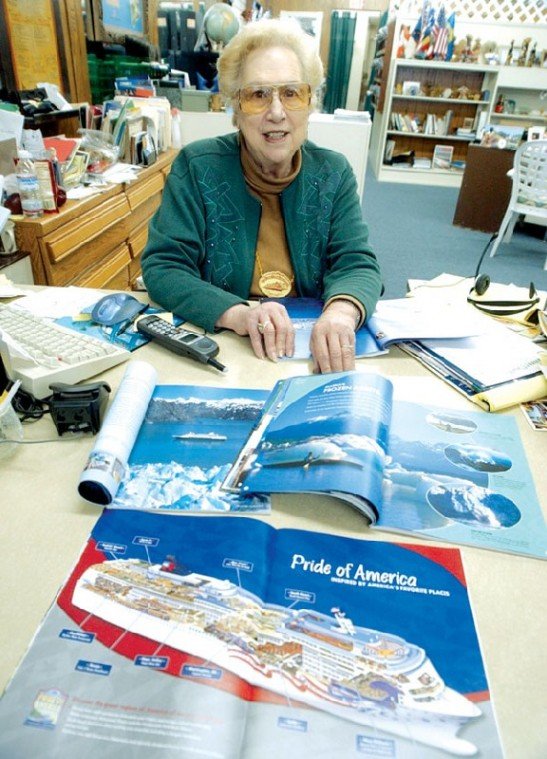Carlotta Gumbin and her husband Scott wanted to take their
daughter on a Mexican cruise this year, but that will have to
wait.
Gumbin, a resident of Morgan Hill, was unemployed for a year and
a half, so funds have been tight.
Carlotta Gumbin and her husband Scott wanted to take their daughter on a Mexican cruise this year, but that will have to wait.
Gumbin, a resident of Morgan Hill, was unemployed for a year and a half, so funds have been tight. And although she’s found a job that offers vacation benefits – three hours accrued each week – the time is sucked up just as quickly as it’s earned.
School functions, illness and other necessities of life force her to take off one day at a time, rendering her a year-round worker despite her best efforts.
The family’s last vacation was in 2000.
“From what I’m seeing, most (of the people I work with) aren’t taking their vacations,” said Gumbin. “They’re maxing out. It’s a smaller company, and you’re kind of expected to be there. There’s nobody really to take your spot unless you do some major training.”
The same is true for a growing number of Americans, as average work hours rise and vacation hours fall across the nation, according to surveys by the research firm RoperASW, despite the fact that Americans already work more hours than any other industrialized nation and receive half the four-week vacation time of European nations, according to the United Nations’ International Labour Organization.
While most Americans still work about 40 hours per week, more than one quarter of United States citizens work between 45 and 59 hours per week, according to an October 2004 Gallup poll, and averages compiled by other polling companies, which may have sampled slightly different populations than the Gallup poll, point to weekly hours and unreported overtime, topping 48 per week.
Moreover, as many as 30 percent of employed adults are skipping out on their vacations, continuing to work rather than taking a get-away and giving up 415 million days of free time in 2004 alone, according to travel Web site Expedia.com’s fourth annual survey on the topic.
For many, it’s just not feasible. An informal telephone survey conducted by this reporter found that six of the 20 people surveyed in Hollister, Morgan Hill and Gilroy – just under one third – had taken a vacation in the last year. Childcare, illness and financial strain factored heavily into the decision for many of them, and even if they did take the time off, there was no guarantee of travel.
“My kids don’t live with me. They come out during the summer, and I take my time off then,” said Hollister resident Maureen Mears, an accountant who works in Salinas and takes three weeks of vacation time per year. “I would love to go to Hawaii, Acapulco, Australia … I could go on. It’s just that my money goes for plane tickets every year, and two teenagers eat a lot.”
There is no national requirement for vacation time in the United States, unlike the European Union, which specifies a mandatory four weeks of vacation time per year for government employees and has encouraged private industry to follow suit.
American workers don’t seem to mind the work, though. The average number of hours worked per week has risen since the 1990s, but employee satisfaction has also risen dramatically.
Fifty percent of American employees report being “completely” satisfied with their jobs in 2004, up from 28 percent in 1989, and numbers for satisfaction with job categories such as contentment with one’s supervisor, flexibility of hours and personal safety and job security have been on the rise as well.
According to Gallup, Americans today are more satisfied with their stress and work levels, their opportunities for recognition and promotion, and the flexibility of their hours than they were 15 years ago, and they’re happier about their jobs than workers in other countries.
Based on their responses to the Gallup poll, Americans said that, while they worked longer hours than Canadians and Britons, and received between one half and one third the vacation time, they were more satisfied with their coworker relations, physical safety, hourly flexibility and bosses than Canadian and English counterparts.
Among those who do have time off, travel is on the upswing according to travel agent Eleanor Frusetta, manager of Gilroy Travel.
“Generally, people book vacations that are seven to 10 days – just enough time to fly out, vacation and wash the clothes before you go back to work,” said Frusetta. “This year there’s a big call on Italy. It used to be that more people toured Europe and we had a big play for the Greek islands and Turkey, but with the unrest the like it’s been for the last couple of years, people are just now beginning to say, ‘OK, let’s go.'”
This rise in travel for people on vacation could be explained by a recent rise in the U.S. economy, according to the Bureau of Labor Statistics, which notes that high unemployment stimulates salaried workers to work extra hours in an attempt to safeguard their positions.
But there has also been a shift in American thinking.
In a 1995 survey by the research firm Penn & Schoen Associates, Inc., 75 percent of private-sector employees said they would favor getting paid time off rather than overtime pay.
In 2003, the preference shifted to money, according to Money magazine, with 57 percent of employees saying they would rather have money than free time.
Not everyone feels the need to stay behind their desks, though. Brad Meyer doesn’t get paid vacation time from his commission-only sales job, but travel is a priority for his family.
Meyer and his wife Stefani, a homemaker, vacation about three weeks per year with their three children, said Stefani.
They’re currently planning a hiking trip in Yosemite. The rest of us can just keep dreaming.
Working stats
1.6 million: Number of years it would take one person to use all of the unclaimed vacation time American workers gave up in 2004.
19: Percentage of employees who eat lunch at their desk every day
1,979: Average number of hours worked yearly in the United States, 2001
1,863, 1,842: Average number of hours worked yearly in Mexico and Japan, respectively, 2001
8.1: Average vacation days accrued after one year of service for a small private establishment
12.6: Average vacation days accrued after one year of state or local government service
4: Number of hours added back to the French work week after a failed reduction, bringing the total legal work limit to 39 hours
44: Number of hours in the average American workweek
72: Number of hours in the average American workweek in the 1700s
4.6 days: Length of the average American vacation in 1988
3.8 days: Length in 1999
15.3, 13.8: Average number of vacation days and sick days that government workers get, respectively
13.8, 15.2: Average number that private sector employees get
2.3 million: Number of Americans flying to Europe in 1968
11.6 million: Number in 1999
42: Average number of vacation days taken yearly in Italy
13: Average number taken in the United States
SOURCES: Chicago Tribune; Psychology Today; International Labour Organization; National Transportation Safety Board; the Orlando Sentinel; U.S. Bureau of Labor Statistics; World Tourism Organization














